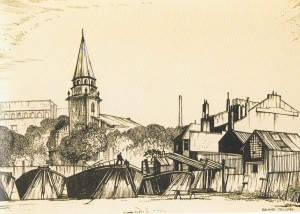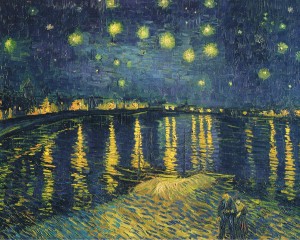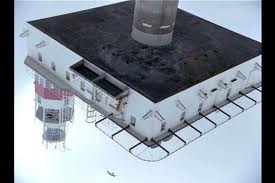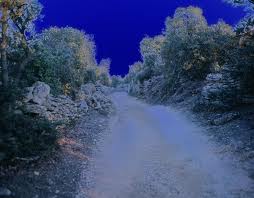Gallery visit – Roland Collins
Posted: June 2, 2012 Filed under: Artists and their work, Gallery visits Leave a commentI first saw Roland Collins work at the Towner Art Gallery, Eastbourne recently. He was exhibiting alongside other artists in the ‘A point of departure’ exhibition. I liked his work and chose to travel into Kent to view an individual exhibition of his work. Included in this exhibition were three drawings in ink that really caught my eye. I like the simple, graphical look of the works. They are detailed drawings but to me are not too complicated and fussy, hence the use of the term simple. The drawings were approximately A3 size, so I was able to examine the techniques he used closely. I have made notes in my sketchbook of certain techniques, which has given me ideas for the future. I like seeing what can be achieved with a pen and the drawings seemed to fit with what I am studying at the moment, namely, detailed drawing using line.
Detailed observation project – stipples and dots – attempt 2
Posted: May 28, 2012 Filed under: Detailed observation project - Part Two Leave a commentThis is my second attempt at this exercise. I chose to draw some sticks of willow tied together with a piece of string. There was an interesting texture along the willow, which contrasted with the string. I used a fine artist drawing pen and used a mixture of marks to indicate differences in tone and texture. I used dots along the string to indicate the shadows and a mixture of different marks to show the texture and tone of the willow.
I am not sure I like the result of this drawing. It was more challenging than my first attempt. It was difficult to indicate the difference between form, texture and tone, especially as the willow was quite thin. I am not sure that it is easy to tell the outlines of the willow rods but I was trying to avoid drawing an outline and filling it in as suggested by my previous tutor. I am still having problems with the background.
It has shown me the variation of marks you need to be able to represent tone, texture and form with a pen. It is harder to vary the tone by pressure so you have to rely on different marking techniques.
Experimental drawing – chapter 2 – my sketchbook gesture experiments
Posted: May 27, 2012 Filed under: Supplementary work and sketchbook Leave a commentRobert Kaupelis describes the process of gesture drawings as attempting ‘to perceive the form in its entirety and to record the essence of the particular gesture in a matter of seconds’. I tried to experiment by drawing my son painting and also some athletes on the television. These drawings were all done in charcoal as suggested.
I enjoyed this exercise. I am not sure if I am doing the process of gesture drawing correctly but I enjoyed experimenting. I have not tried to draw things at such speed before and it is a challenge to capture a movement. I found particularly in the case of the athletes running and throwing were a real challenge and I had to rely on my memory in some cases. The last drawing was done a little slower as I paused the TV but I still drew quickly to keep the sense of movement. I like the freeness and expressiveness of this type of drawing.
Experimental Drawing – chapter 2 – my sketchbook contours
Posted: May 27, 2012 Filed under: Supplementary work and sketchbook Leave a commentHere are some of my attempts at quick contours drawn blind. I managed not to look as I drew my hand and found it a useful exercise to concentrate solely on the lines of my hand. Drawing it at different angles helped me practise this technique. It has really helped me focus on the line and I followed the suggestion of imagining my pencil/pen actually touching the my hand. This is just an excerpt from my sketchbook but the exercise has helped me with my drawing technique and given me confidence to experiment as I am not worrying about the result.
Detailed observation project – getting tone and depth in detail – attempt 2
Posted: May 24, 2012 Filed under: Detailed observation project - Part Two Leave a commentThis is my second attempt at this exercise. In the first attempt, I drew a shell which at the time I was fairly happy with but on reflection I thought I would experiment a bit more. This time I drew a piece of rock from our garden. This was a real challenge for me as I really had not tried to draw such an object before.
The challenge was to draw the detail of the rock, with its ridges and texture and recreate the tones using pencils of different grades. I decided to represent the detailed surface using mainly hatching techniques with a few other marks for contrast. I tried to simplify the drawing by drawing the planes of the rock. This was something I have not tried before and I am pleased with the result. I also tried to have a strong contrast between the dark areas and the lighter areas. This I achieved through denser hatching and building up layers of different tones and a putty rubber for the highlights. I used the suggestion of screwing up your eyes to see the contrasts easier.
This exercise has taught me how to vary the tones through different means at my disposal. I used different grades of pencil and layering of hatching. I found the suggestion of screwing up my eyes to be very helpful. I feel I have had more confidence to experiment in an area I would normally avoid (i.e. I do not like detailed drawing). This has been due to looking at other artists work, either at exhibitions or in books and seeing their different approaches to drawing. I still feel I have a way to go and much progress to make but I am moving forward.
Chapter 2 – contour, gesture and modeled drawing
Posted: May 21, 2012 Filed under: Supplementary work and sketchbook Leave a commentContour drawing is a linear means of defining form.
Blind contour tour drawing is done blind, without looking at the paper. Kaupelis encourages the student to believe the pencil is touching the form that they are trying to draw.
Partial-peek is where you are allowed to occasionally look at the page and quick contour is a more rapid execution of blind contour drawing.
I experimented with blind contour drawing, both quick contours and slower, more detailed. Kaupelis suggested starting with blind contours and I found this approach produced surprising results. It helped me focus on the basic contour and not get bogged down in the details. I prefer this approach to drawing as I am not keen on detailed drawing and prefer more abstract styles. I found the examples from Durer, Raphael and Matisse fascinating as they show how to convey the form with minimal strokes of a drawing instrument. It has helped me understand and approach line drawing differently.
Chapter 1 – Experimental Drawing
Posted: May 21, 2012 Filed under: Supplementary work and sketchbook Leave a commentI have decided to read this book and work through some of the exercises as time permits. I do not know a great deal about how to draw so I think it will really help me to learn. I enjoy the style of this book and the unusual exercises that are suggested.
I tried the exercise suggested of choosing a master to love and hate. My choices were The Starry Night, over the Rhone by Van Gogh (1888).
After spending time with both of these pictures, at separate times, my conclusion is that the more time you spend with a painting/drawing, the more detail you see and it is possible either to change your opinion or strengthen it. I liked Van Gogh’s painting due to the bright colour, the feeling it conveyed and the clever use of a simple palette of colour.
This exercise taught me to really examine drawings and paintings and think about them after viewing.
Detailed observation project – line drawing detail exercise – part 2
Posted: May 21, 2012 Filed under: Detailed observation project - Part Two Leave a commentThis was my second attempt at this project, several months after my first due to the break I took. I decided to do this exercise again and this time spend more time trying to observe the detail as my first attempt was rather rushed.
The object of the exercise was to draw line rather than tone. This fitted with the work I have been doing from Robert Kaupelis’ book, ‘Experimental Drawing’. The exercises I have doing from there have been teaching me about contour drawing and trying to focus only on the line and nothing else. This helped me to complete this exercise.
At my last attempt at this exercise, I chose to draw a sliced cabbage. This time, I picked something that I regarded as more challenging, a fir cone. The first drawing this time ended up far too small and did not fill the paper. I was trying to avoid using my pencil before using the pen, hence the result was too small. The second version filled the paper.
My thoughts:
It was a real challenge trying to avoid filling in the tone and concentrate only on line. I felt it looked flat at first but as I worked down the drawing it began to come together and looked more three-dimensional. I tried to apply what I had learned from Kaupelis’ book about imagining the pen actually touching the form. I am pleased with the result.
Cerith Wyn Evans – gallery visit
Posted: May 20, 2012 Filed under: Artists and their work, Gallery visits Leave a commentI visited the De la Warr Pavilion, Bexhill to see an exhibition by Cerith Wyn Evans in May 2012.
Cerith Wyn Evans is a conceptual artist, sculptor and film-maker born 1958 in Wales.
The exhibition comprised a number of works installed throughout the building. Housed within the De La Warr pavilion, an iconic building, he has described the exhibition as a ‘love letter to the building’. The building is situated on the seafront and the artist has positioned works to relate to the horizon and the nearby Beachy Head. The gallery spaces which are normally enclosed, have been stripped back to reveal windows and light spaces normally missing.
There are a number of ‘experiences’ to visit:
Mimosa, mixed media, 2012
Permit yourself to drift from what you are reading at this very moment into another situation…Imagine a situation that, in all likelihood, you’ve never been in, neon, 2009
After ‘La Monnaie Vivante’, projection, 2008
Untitled (Flute piece incarnation De La Warr Pavilion), mixed media, 2011
Anthropomorphic portrait by Sulwyn Evans VIII, black and white hand-print, 2003
S=U=P=E=R=S=T=R=U=C=T=U=R=E (‘Trace me back to some loud, shallow, chill, underlying motive’s overspill…’), mixed media, 2010
And if I don’t meet you in this world then I’ll, I’ll meet you in the next and don’t be late, don’t be late, firework in scaffold support, 2012
My thoughts:
I will be honest and say I am not sure quite what to make of this body of work. I was told by the gallery that the artist did not explain the work but left it to the visitor to form their own conclusions and understanding.
The curator, David Rhodes, commented in the gallery guide as follows:
Rather than imposing a narrative or chronology, the artist has produced a series of experiences, dispersed throughout the building through which the visitor may find multiple avenues of understanding…..Through the exhibition’s specific emphasis on movement within architectural space, and by avoidance in his work of any direct communication of meaning, Wyn Evans creates a context in which the viewer’s individual physical presence and agency are accentuated. The visitor is brought into play by the artist alongside the building, artworks as material for the exhibition. David Rhodes, Curator
As the artist has stated he wants the visitor to form their own conclusions, I spent some time considering what I got from the exhibition.
Mimosa, rotating trees placed on the floor, appeared to me to be an attempt to make a connection between the outside world and indoors. The trees were brought from outside and plugged into the mains and were rotating. The effect was false, stressing to me the beauty of nature can be obscured rather than enhanced by man.
The flutes hanging from the ceiling looked beautiful. The flutes each produced a different note, which were blown by the machine randomly. I am an amateur musician and I found the use of the random flute notes to be an interesting addition in conveying the feeling of space. As I live on the coast, I have heard the sound of horns and other mysterious sounds out to sea. These flutes reminded me of the vastness of the sea as well as demonstrating the openness of the gallery space.
The long, narrow neon sign is positioned so the text can be read in the reflection of the windows. It appears to hover out to sea parallel to the horizon. This appeared to push the meaning outside, taking us from inside to outside in our thoughts and perceptions.
The contrast of superstructure as it pulsated in the upper gallery was interesting to me. The tall narrow filament tubes arranged as columns are suspended from the ceiling although they appear to be standing on the floor. The pulsating of the light is said to match our heartbeats. As the bulbs light, great heat and light are given off. This contrasts with the bulbs as they dim. They become transparent and each detail can be seen. Each of the columns (three in all) pulsate at different times creating a beautiful and powerful effect. I was not sure how this works relates as it appeared different to me to the lower gallery. It had an industrial feel, due to the construction using filaments and light tubes as well as the overall shape being columns. Whilst sitting in the cafe, I noticed that there are similar shaped columns running down the outside of the building. Maybe this was an attempt to relate the work to the building and interact with it.
Finally, I did not visit the firework on the roof but its text reminds me of death and peoples’ belief in an afterlife. At the beginning, it was stated that Wyn Evans was trying to incorporate elements of the surroundings of the pavilion. Is he here trying to reference Beachy Head, a well known suicide spot? Was the positioning of the firework on the roof accidental or a further reference to this?
In summary, I found this exhibition to be very stimulating. My first walk around yielded little but a questioning of what he was trying to say. As I sat down and read about his style and viewed a second time, it became more clear to me that it was up to me to interpret. On further reflection since, further thoughts have occurred to me, which shows that we should continue to view and think about art. It is possible that our feelings one day may change and we are lead to different conclusions another. I feel this exhibition lends itself to this approach.
Catherine Yass – Gallery visit
Posted: May 20, 2012 Filed under: Artists and their work, Gallery visits Leave a commentI visited this exhibition in August 2011.
Catherine Yass is a leading contemporary photographer and film-maker whose work captures the psychological impact of architectural space.
The exhibition consisted of three films and photographs. The films conveyed to me more the impact of space. The first film, Lock (2006) is filmed on a cargo ship proceeding through a giant lock in China on the Yangtze river. The view from the front of the ship is projected on a screen in front of the viewer and the view to the rear is projected behind. The overall effect to me was one of confinement. The lock felt like it was towering above us and we were cocooned in the lock waiting to be set free. The experience was all-encompassing and realistic.
The second film, Lighthouse (2011), is filmed on and around the Royal Sovereign Lighthouse. This a local lighthouse located on a platform five miles out to see. Yass uses filming from a helicopter, a boat and divers to create a film that completely disorientates the viewer.
The third film was called Descent (2002), and takes the viewer next to a building at Canary Wharf. The filming is inverted which changes the viewer’s sense of gravity.
I found all the films intriguing and got the point that we have different perceptions of the space around us which can be distorted. My favourite was the Lock as I felt it conveyed the idea of confinement at the same time as cinematic space.
I found the photographs harder to understand as they seemed to be playing with the reality of visual space but maybe I needed to do more research or spend more time looking and trying to understand these. Yass uses the technique of overlaying negative and positive transparencies. The resulting colours are bold. I agree that the images are striking and appear to me to give a sense of unreality. The gallery guide says that the ‘electrifying colours transport the physical space to that of the psychological’.

























